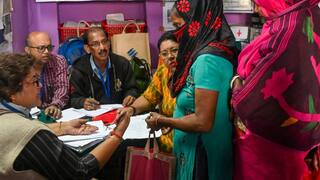Apple-Led Global Refurbished Smartphone Market Grew 15%: Counterpoint
The global refurbished smartphone market saw a 15 per cent (on-year) growth, led by Latin America and India, and Apple maintained its lead in the secondary market as Samsung inched closer.

New Delhi: The global refurbished smartphone market saw a 15 per cent (on-year) growth, led by Latin America and India, and Apple maintained its lead in the secondary market as Samsung inched closer, a new report said on Wednesday. With new flagship smartphone prices remaining at the higher end, a larger share of consumers considered buying refurbished models of popular brands like Apple and Samsung, said Counterpoint Research's Global Refurb Smartphone Tracker report.
"Trade-ins are the fastest-growing source for such pre-owned smartphones, the volume of which grew more than 10 per cent globally in 2021. We are seeing a YoY increase in volumes among refurb players in developing markets like China, India, Latin America, Southeast Asia and Africa," said senior analyst Glen Cardoza.
These markets will grow more as they have many unorganised businesses and a large rural demographic yet to be captured. Latin America and India lead with the highest growth rates, at 29 per cent and 25 per cent, respectively.
"There were supply shortages in the secondary market in 2020 due to COVID-19 lockdowns and other supply chain disruptions. But the market roared back in 2021," said research director Jeff Fieldhack. There are large consumer appetites for flagships and the latest flagships have the highest point-of-sale prices in India and LATAM.
"The secondary market offers consumers the ability to access these devices at ASPs 60 per cent lower than new versions. The improved durability and high quality of flagships make them very appealing in the secondary market," Fieldhack added.
Keeping sustainability in mind, some OEMs have started advertising and assuring all stakeholders about their sustainable practices, right from sourcing and production to the end of device lifecycle. "This is an ongoing set of initiatives that will gather more steam in the coming quarters. OEMs will have to balance the cost of sustainability with their profit," the report noted.






































